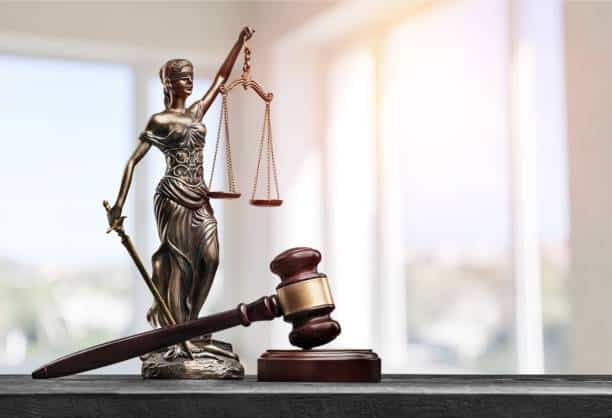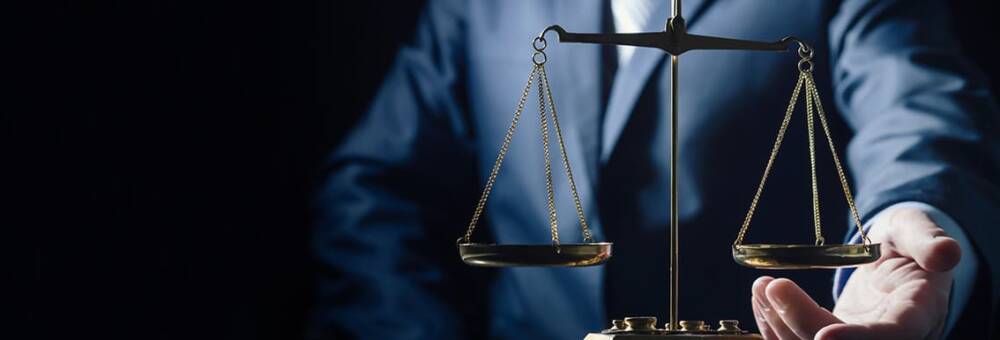Top legal advice for a creator or buyer
The creator or the buyer must manage not only the economy of his project, but also make essential choices on the legal, fiscal and social functioning of his future company.
"50 answers for a business creator or buyer" provides the elements most awaited by women and men who have a business project.

In this article, we will discuss the legal theme. To find our other themes, do not hesitate to browse our other articles on the subject!
Here are the different points covered in this article in a simple and concise way:
– The choice of the social form
– Should we have partners?
– The liability of the partner
– The responsibility of the manager
– The protection of the heritage of the individual entrepreneur
– Small or large share capital
– The loss of half of the share capital
– Publication of the annual accounts
– Protection of your brand
– Company archives
The choice of social form
Sole proprietorship and general partnership do not offer limited liability. You are therefore responsible for all of the company's debts on your personal assets. These two forms of business should therefore be avoided.
After this observation, and unless specific regulations in your profession, you have the choice between the EIRL (the sole proprietorship with limited liability), the SARL (the limited liability company), the SA (the public limited company) and the SAS (the simplified joint-stock company). Of course, there are other social forms. But the latter are so rare and particular that they will not be described in this book.
The EURL is a SARL with a single partner. Like the SASU which is an SAS with a single partner.
The name “EURL” is a commonly used term used during parliamentary debates. Legally the term EURL does not exist. If you create an EURL, you will indicate on your letterhead “SARL au capital de…”.
The choice of the corporate form of your company must be guided by three essential considerations:
Your social protection as a manager is determined by the type of company. In SA, SAS and SASU you will benefit from employee-type social protection, regardless of the percentage of share capital held by your household (yourself, spouse, PACS partner, minor children). As a manager, you will have a payroll like any executive employee. This social protection of the manager also applies in SARL if the managers and their family do not hold more than 50% of the share capital.
In both cases, if you meet the necessary conditions, you will be entitled to a small unemployment benefit (6 months at 800 €)
The taxation of the company changes according to the social form:
In EURL and EIRL, the tax system is of the BIC type (industrial and commercial profits which are taxed directly on income tax) with the possibility of opting for corporation tax. Depending on the projected profits, BIC taxation may be more advantageous than corporation tax. The family SARL is a SARL whose share capital is held by members of the same family (ascendants and descendants). The family SARL is normally subject to corporation tax but it can opt for BIC-type taxation.
Management of the relationship with partners
The statutes of the company codify the functioning between the partners. Depending on the type of company, the law leaves more or less leeway to partners to make specific provisions in the articles of association of their company. At this level, the SAS enjoys great freedom of drafting. It makes it possible to provide in its articles of association all the management of the relationship with the partners (clause of non-competition, terms of meetings of partners, exclusion clause, etc.).
The risk :
If the corporate form of the company is unsuitable, the tax costs and your social protection can be totally penalizing. The transition from one social form to another is in most cases possible. But it then generates legal and sometimes tax costs.
The advice corner:
The choice of the social form must be made according to two essential parameters: the desired social protection and the management of your relationship with your associates.
The choice of the social form must be made essentially according to your state of health
The EIRL is not a company, but a mode of exercise of the individual company. It makes it possible to define the list of equipment, various means of exploitation useful to the company. In case of failure of the company, only the elements of this list will be liquidated. Operating debts will not encumber the operator's assets.
In spirit, an EIRL is very close to an EURL, but the latter is a company (with statutes).
The EIRL submits the list of means of operation to the registry of the commercial court every year.
The EIRL can opt for corporation tax.
Do you need to have partners?
A partner is a person (natural or legal) who makes contributions to the capital of your company with you. These can be in cash or in kind (machines, buildings, debts, etc.)
Certain forms of companies also admit contributions in industry. The contribution in industry is prohibited in public limited company. Contribution to industry is the provision of know-how, work capacity or services. But its “contribution” is not accounted for in the amount of share capital. In SARL and SAS, the contributor in industry will be entitled to the dividend and to the vote in general assemblies of the associates.
Unless otherwise specified, if a partner holds 30% of your company, he will be entitled to 30% of the distributed results and to 30% of the value of your company in the event of its liquidation or sale.
You will be required to invite your associate(s) to general meetings for them to vote. In some cases, the partners can be an obstacle to a certain number of decisions, even if they are in the minority. For example, in an SA, 34% of the voting rights are enough to block a modification of the statutes.
The risks :
The first risk is misunderstanding. It will be necessary to manage a conflict which will perhaps end with the repurchase of the shares of your partner. Which can be very expensive.
The second risk is the respective involvement of the partners. Even if your partner does not work in your company, at the time of its resale, or quite simply at the time of distributing the result, this “dormant” partner receives the percentage that is legally due to him.
The advice corner:
There are enough social forms of society for the choice to have a partner to no longer be linked to a risk of social protection or tax management.
The choice to have a partner must be guided by other considerations such as the need for capital, know-how, a business network, etc.
If nothing requires you to have a partner, choose to be the sole shareholder of your company. You can always later join forces with your children, your spouse or a third party through a donation, a capital increase, a sale of shares, etc.
If you join, the statutes of your company or a partner pact, must provide for the terms of resolution of the events of your life as a partner (willingness to leave the company, will to sell, etc.)
Very interesting clauses can be included, such as:
– a clause excluding the quality of partner in the event of events that you will have defined in advance as faults;
– an inalienation clause to prohibit the sale of the company's securities for a certain period;
– a clause setting the method of valuing the shares or shares in the event of transfer of the latter;
– a pre-emption right clause for the benefit of certain partners in the event of the transfer of securities;
– a clause instituting a joint exit right which allows the minority shareholder to exit if the majority shareholder sells its shares;
– a mandatory exit clause which obliges the minority shareholder to sell its securities if the majority shareholder sells its securities;
– a non-competition clause during and after the association;
– a clause for the benefit of non-executive partners establishing a superior right to information on the management and accounts of the company;
– a so-called “meeting” clause which sets a future period when the majority shareholders will meet the minority shareholders to sell or buy their shares.
In fact, the imagination of lawyers can be very fertile, limited only by the will of the partners and the law.
The responsibility of the partner
If you are a partner in a limited liability company, a public limited company or a simplified joint stock company, your liability will be limited to your contributions to the capital of the company.
You only risk your “capital investment”. Be careful, any loans or advances of money that you have made to the company will most certainly be lost in the event of judicial liquidation.
Avoid being a partner in a SNC (general partnership) because all the partners are jointly and severally liable for all of the debts of the company, regardless of their percentage of ownership in the capital of the company.
If you are a partner in an SCI (real estate civil society), you will be liable indefinitely for the debts of the company but in proportion to your share capital ownership.
The partner must not interfere in the management of the company. He must not intervene in personnel management, nor in strategic or tactical choices, nor in investment choices. The partner would risk being qualified as a de facto manager. In the event of mismanagement, its financial responsibility could then be engaged.
The risk :
Banking organizations almost always ask for a guarantee to grant their loans. A loan can benefit from several guarantees. The personal guarantee of one or more partners is often requested. The latter are then liable on all of their personal assets for the debts thus guaranteed by the company.
The advice corner:
Guaranteeing a bank loan or other debt by one or more partners should be avoided. But the negotiation with the bank is rarely to the applicant's advantage on this point.
If you have to stand surety personally, pledging business or equipment will be welcome. In the event of default, this collateral will increase the likelihood that your bank will benefit from the money in the liquidation of the business. Your contribution to the deposit will then be lower.
In the event of transfer of the company, the surety remains valid even if the surety is no longer a partner of the company. In the event of the sale of its shares, prior to the assignment, the assignor must therefore ask the assignee to “take back” its guarantees. This is part of the sales negotiation. The organization benefiting from the guarantee is under no circumstances obliged to accept.
Personal guarantees vis-à-vis banks are the most numerous. But in the context of commercial conditions, the partners can also be asked to stand personally as guarantors, for example of the rents of the buildings that the company occupies or of debts vis-à-vis a fuel supplier.
In all cases, the partner may refuse to act as guarantor and thereby threaten the company's projects.
If a partner of a SARL, SA or SAS must stand surety for certain debts of the company: his commitment will be limited to the guaranteed debts. It will not be joint and several with the other debts of the company.
Manager's responsibility
Being a leader of a company is a real commitment. The responsibilities are multiple.
The liability of the manager can be:
– criminal in the event of a breach of legislation applicable to the company,
– tax in the event of fraudulent maneuvers or when serious and repeated non-compliance with tax obligations has made it impossible to recover taxes,
– civil if he is the author of an act that causes damage to others, or in the event of an infringement of the legislative or regulatory provisions applicable to the form of the company, or in the event of violation of the articles of association and in the event of misconduct management.
The Manager's mismanagement may lead the latter to be condemned to pay part or all of the company's debts.
The advice corner:
If you benefit from the advice of an accountant or a lawyer, if you act in good faith, the risk of tax liability is very low.
The fault of management is not the error of management. To be wrong in the productivity of the company and to hire an employee too many, or bad results for the company are not faults of management.
On the other hand, the fault of management would be constituted for example in the event of hiring by the manager of his daughter, without competence and over-remunerated, in the event of absence of insurance for the vehicles of the company, in the event of leaving -go when the leader discovers the reprehensible actions of a manager, in the event of negligence to straighten the company by letting it sink into difficulties without notifying the partners.
Heritage protection
of the individual entrepreneur
For debts born after August 7, 2015, the main residence of an individual entrepreneur cannot be seized to pay his professional debts.
This exemption from seizure benefits all natural persons registered with the RCS, the directory of trades
In the event of the sale of the principal residence: The price obtained from the sale remains unseizable if, in the following year, the sums are reused for the purchase of a new principal residence.
The individual entrepreneur has the possibility of protecting the rest of his real estate assets (built or not built)
He just needs to make a declaration of unseizability to the conservation of mortgages through his notary.
The declaration of unseizability is drawn up by a notary, published in the land registration service and mentioned in a register of legal publicity of a professional nature (RCS, directory of trades, etc.).
The buildings of the individual entrepreneur will then be unseizable for professional debts arising after the declaration.
Please note: the buildings should not be entered on the balance sheet of the sole proprietorship. Otherwise, they will not be protected.
The risk :
Your creditors (including banking organizations) may still ask you for a mortgage or other real security on the protected property. You will then have the choice to grant them.
The declaration of unseizability must precisely state all the buildings concerned by the protection because any real estate element not indicated will not be protected.
The advice corner:
Combined with an EIRL, the individual entrepreneur has good protection of his real estate assets.
The process of protecting your assets is totally essential if you exercise in the form of a sole proprietorship.
The cost is not very important (about 700 €).
Small or large share capital
There is no small or large share capital: there is only the amount of money necessary for the company to operate financially without worry.
Many business failures are linked to their undercapitalisation. That is to say, the weakness of the starting stake of the partners, the absence of new payments of money from the partners after losses or to finance new developments.
The share capital is used to finance all balance sheet items (equipment, receivables, stocks, etc.) according to the manager's choices.
The money contributed by the partners can be registered in the share capital or in the partner's current account.
In the first case, the money will only be returned to the partner on the liquidation of the company (if the latter is in surplus) or on the sale of the company (if the sale price of the shares is higher than the capital social).
The reduction of the share capital makes it possible to recover its investment. But this operation is complex, rare and expensive.
For the other case, the contribution to the partner's current account: this is equivalent to a loan to the company; the partner can recover his money as soon as the company has the means to reimburse him without finding himself in a complicated financial situation. All without taxation.
The risk :
Some banking organizations impose a blocking agreement on the partner's current account. Then, during a fixed period, even if the company can easily reimburse the associate, the latter will not have his money. On the other hand, this partner's current account may be remunerated by the company.
An overall contribution to evidence that is too low can be considered a management error. The company is then “poorly born” and very quickly becomes too fragile.
Banking standards often require a financial contribution of at least 20% of the sums borrowed. This can be registered in capital or in a blocked current account over a period often equivalent to the duration of the loan taken out.
The advice corner:
We must pay attention to the amount of share capital, for obvious financing reasons, but also for other reasons.
Indeed, under certain conditions, and in the current state of the legislation, you will be entitled to aid, which varies according to the amount of the share capital and the partner's current account.
In addition, investors in share capital can benefit, under certain conditions, from an income tax reduction based on the sums in cash invested in the capital of a company.
The share capital is made up of shares (or shares) of a certain nominal value. For example: a capital of €10 can be made up of 000 shares at €100 or 100 shares at €10 or 1000 shares at €10…
It is always more prudent to divide the share capital into as many shares (or shares) as possible. The shares are expected to increase in value. If they are few in number, their unit value will quickly become significant, which does not facilitate their sale or donation.
In our example, 10 shares at one euro per share would be more suitable for a future transmission.
The loss of half of the share capital
SARL, SA and SAS confer on their partners a liability limited to their contributions.
Suppliers and third parties may therefore suffer the consequences of a business failure.
The law provides that if these companies make cumulative losses (not offset by profits) greater than half of the capital, a special procedure must be applied.
Example:
If the capital of a SARL is €10.
The first exercise makes a profit of €3. But the second exercise realizes a loss of €000.
The company therefore lost €6 over two financial years, i.e. more than half of the capital, which is (000/10 =) €000.
The partners then have four months, after the general meeting noting the loss, to decide whether to dissolve the company or not.
Their resolution will be published in a newspaper of legal announcements and registered on the K BIS of the company.
If the partners opt for the maintenance of the company, the latter will have a period of two years to restore the equity to a level at least equal to half of the share capital.
After this deadline, any interested party may request the dissolution of the company at the commercial court. The latter can then grant a reprieve of up to six months to regularize the situation.
The risk :
Failure to carry out this legal procedure is a fault engaging the responsibility of the managers.
The loss of half of the registered capital is likely to cause difficulties with suppliers who may fear that they will not be paid. The situation can be further aggravated by the fact that the credit insurance organizations will no longer insure the debts on your company.
The advice corner:
If the partners are in favor of keeping the company, it must recapitalize.
Many solutions exist: contribution in cash or in kind to the share capital of the company, integration into the share capital of the company of partners' current accounts or debts, but also free revaluation of the company's fixed assets, abandonment of account- current of associates with return to better fortune clause.
Publication of the annual accounts
Limited liability companies: SARL and EURL; joint-stock companies: public limited company (SA), SAS; commercial companies whose head office is located abroad and which have opened one or more establishments in France; freelance companies: SELARL, SELAFA, SELCA, SELAS; must publish their annual accounts at the registry of the commercial court of their registered office, in the month following the general meeting which approves them.
For example, if the company closes its financial year on December 31, 2019, the accounts must be filed before July 31, 2020.
The following documents must then be submitted:
- the annual accounts (balance sheet, income statement and appendix)
- the deliberation on the allocation of the result
- the auditor's report
Small and medium-sized companies are exempt from filing the annual management report. They only have to make the annual management report available to anyone who requests it.
After publication at the Registry, in theory: these documents become public: everyone can consult them on sites such as "info graft", "society.com" ... or obtain photocopies from the registry concerned.
In theory only, because the vast majority of companies have the possibility of requesting that their annual accounts, filed with the registry of the commercial court, not be made public. Only administrations, judicial authorities or the Banque de France have access to it.
The privacy option annual accounts is reserved for companies fulfilling at least 2 of the following criteria:
- balance sheet total of less than €350;
- net turnover of less than €700;
- less than 10 employees.
The risks :
In case of non-confidentiality, your customers, your suppliers, your competitors then know your results with a few months lag. In the event of a particularly positive situation, the former may seek to exploit this information, whereas a rather negative balance sheet will push the others to react.
The advice corner:
If the accounts are published, they are not detailed. Third parties will see, for example, a gross salary item of €60. But they won't have any details. They will only be able to determine an average salary based on your workforce. Of course, if you are alone in your business, it is more difficult...
On the other hand, third parties will realize the weakness of a gross margin, a lack of profitability, an unbalanced balance sheet between receivables and debts, cumulative losses, etc.
In short, you display the essentials but without detail. The following four pages show the published accounts excluding annexes.
Except in very special circumstances, it seems essential to publish one's accounts in compliance with the law but to request confidentiality.
Indeed, if you do not publish your annual accounts, your liability as manager could be engaged in the event of default by the company.
Finally, failure to publish the annual accounts is punishable by a fine against the manager. In addition, any interested party may ask the court to publish your accounts under penalty.
The new statute of the “EIRL” also provides for the publication of the annual accounts and of the assets of the company.
Example of published summary account
The summary income statement:
|
Income statement |
2018 |
% |
2019 |
% |
|
Turnover |
96 000 |
Present in several = 100% |
97 900 |
Present in several = 100% |
|
Total of exploitation products |
96 000 |
Present in several = 100% |
97 900 |
Present in several = 100% |
|
Purchases made of materials |
21 875 |
Present in several = 23% |
21 437 |
Present in several = 22% |
|
Change in stock of materials |
-875 |
-1% |
-17 |
0% |
|
External charges |
27 790 |
Present in several = 29% |
28 733 |
Present in several = 29% |
|
Dues and taxes |
540 |
1% |
350 |
0% |
|
Depreciation and amortization |
1 400 |
1% |
1 400 |
1% |
|
Total of the exploitation charges |
50 730 |
Present in several = 53% |
51 903 |
Present in several = 53% |
|
Operating result |
45 270 |
Present in several = 47% |
45 997 |
Present in several = 47% |
|
Financial expenses |
64 |
0% |
39 |
0% |
|
bottom line |
-64 |
0% |
-39 |
0% |
|
Current result |
45 206 |
Present in several = 47% |
45 958 |
Present in several = 47% |
|
Income tax |
7 702 |
8% |
7 913 |
8% |
|
The result of the exercise |
37 504 |
Present in several = 39% |
38 045 |
Present in several = 39% |
The synthetic balance sheet
|
Review of |
31/12/2018 |
31/12/2019 |
|
Intangible assets |
1 200 |
1 200 |
|
– Intangible amortization |
400 |
800 |
|
Fixed assets |
5 000 |
5 000 |
|
– Tangible depreciation |
1 000 |
2 000 |
|
Net fixed assets |
4 800 |
3 400 |
|
Stocks of materials |
875 |
892 |
|
Receivables |
6 400 |
6 527 |
|
Check Availability |
49 366 |
79 571 |
|
Current assets |
56 641 |
86 990 |
|
Total assets |
61 441 |
90 390 |
|
Share capital |
1 000 |
1 000 |
|
Reserves, retained earnings |
|
37 504 |
|
The result of the exercise |
37 504 |
38 045 |
|
Equity |
38 504 |
76 549 |
|
borrowings |
3 360 |
1 695 |
|
Current accounts |
9 000 |
9 000 |
|
Payables |
2 086 |
2 143 |
|
VAT payable |
789 |
794 |
|
Company tax |
7 702 |
209 |
|
Total debts |
22 937 |
13 841 |
|
Total liabilities |
61 441 |
90 390 |
Protecting your brand
The National Institute of Intellectual Property (INPI) manages trademark protection.
To be registered with the INPI, your trademark:
– must be represented graphically;
– must not already be used;
– must not be likely to mislead the public;
– must not contravene public order;
– must respect certain national symbols;
– must be distinctive.
Trademark law is particularly complex.
The INPI registers the mark. But even registered, your trademark is subject to appeal by those who consider it invalid.
The INPI website provides information on trademarks already registered.
The INPI online form asks you to choose the classes where your trademark will be protected for 10 years (renewable indefinitely).
Class means a category of goods or services. The higher the number of classes, the greater the range of protection for your brand.
Please note that you cannot file a trademark that is already well known, even if it is not registered with the INPI.
The cost of the deposit is around 300 €.
The advice corner:
Do not hesitate to register your brand at the community level. The essential advantage is that it suffices to use your trademark in one country for it to be valid in all the countries of the EEC. The file is to be requested from OHIM (in Spain). The cost is around €1.
Given the stakes, involve a firm specializing in trademark protection.
Company archives
Your company issues and receives a large number of documents, some of which must be archived for your legal protection.
At the commercial level:
Contract or agreement concluded within the framework of a commercial relationship,
Commercial correspondence: 5 years
Warranty for goods or services supplied to the consumer: 2 years
Contract concluded electronically (from €120): 10 years from delivery or service
Contract for the acquisition or sale of real estate and land: 30 years
Bank document (cheque stub, bank statement, etc.): 5 years
Goods transport document: 5 years
Customs declaration: 3 years
Insurance policy: 2 years from termination of the contract
Document relating to intellectual property (patent, trademark, design and model filing): 5 years from the end of protection
Supporting document: purchase order, delivery or receipt, customer and supplier invoice, etc. : 10 years from the end of the financial year
At the social level :
Payslip (double paper or electronic form): 5 years
Single personnel register: 5 years from the departure of the employee
Document concerning employment contracts, salaries, bonuses, allowances, balances of any account, pension plans: 5 years
Document relating to social charges and payroll tax: 3 years
Counting of the working days of employees under a flat-rate agreement: 3 years
At the tax level:
Accounting for employee hours, on-call hours and their compensation: 1 year
Declaration of accident at work: 5 years
Income and corporation tax: 6 years
Industrial and commercial profits (BIC), non-commercial profits (BNC) and agricultural profits (BA) under the real regime: 6 years
Corporate tax for the EIRL, limited liability companies (farms, private practice companies): 6 years
Local direct taxes (property taxes, etc.): 6 years
Company property tax (CFE) and CVAE: 6 years
Taxes on turnover (VAT and similar taxes, entertainment tax, tax on insurance agreements, etc.): 6 years




